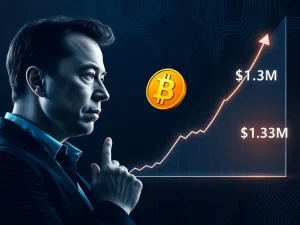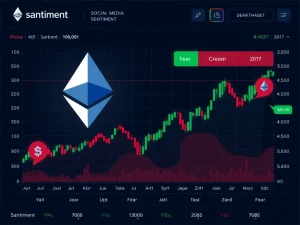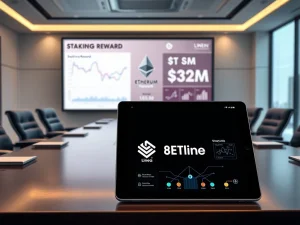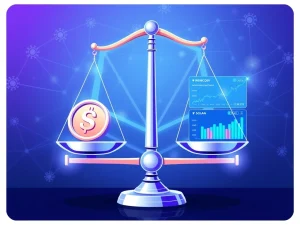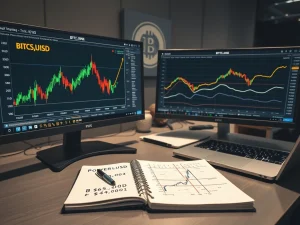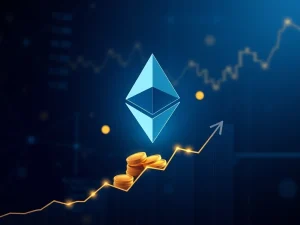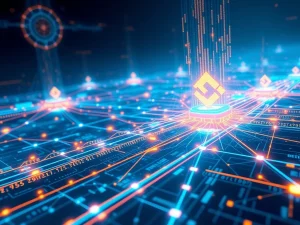Robinhood Crypto Unleashes Strategic Expansion: HBAR Listing Signals Pivotal Shift Amid Regulatory Evolution
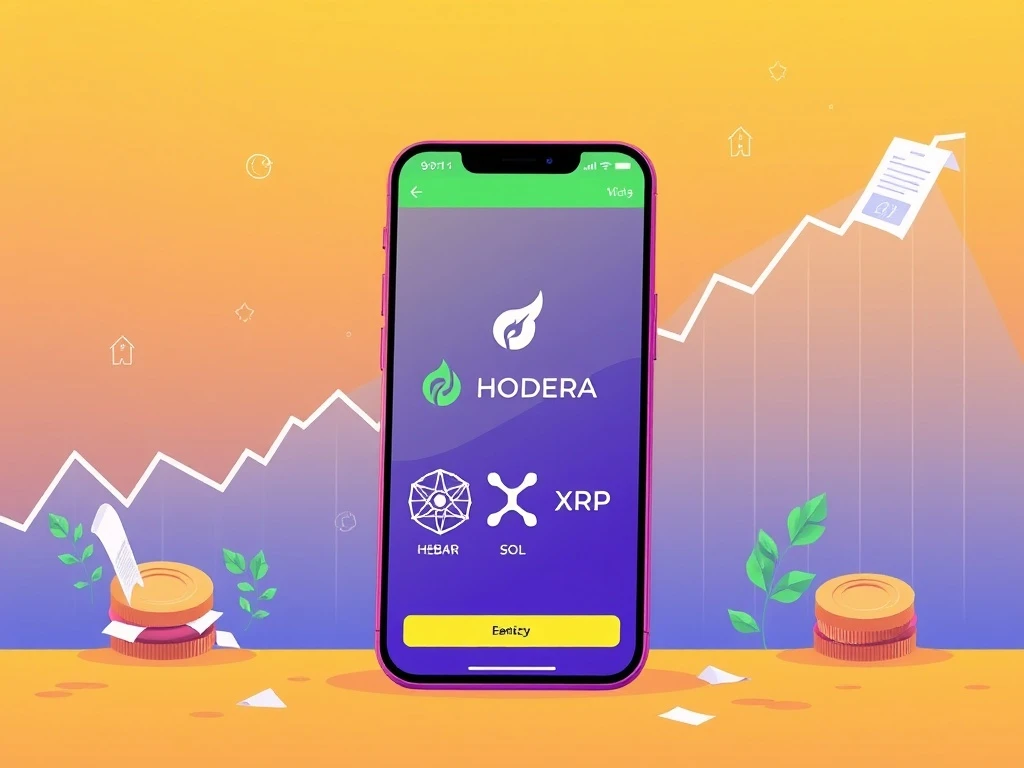
In the dynamic world of digital assets, major platforms like Robinhood are constantly adapting to meet evolving investor demand and navigate complex regulatory landscapes. A significant move was made on July 25, 2025, when Robinhood announced the listing of Hedera (HBAR), the native token of the Hedera Hashgraph network, for its U.S. users. This strategic addition, following the relisting of XRP, Solana (SOL), and Cardano (ADA) in November 2024, firmly positions Robinhood as a crucial hub for a diverse range of cryptocurrencies beyond the dominant Bitcoin and Ethereum. This expansion signals a calculated approach to broadening digital asset portfolios, especially as the crypto industry observes shifting regulatory dynamics under the current administration, which has indicated increased openness to crypto-friendly policies. What does this mean for investors and the broader market?
Robinhood Crypto’s Bold Play: Welcoming HBAR to the Fold
The decision to list Hedera (HBAR) is a testament to Robinhood’s commitment to diversifying its digital asset offerings. For years, Robinhood has been a gateway for retail investors into traditional markets, and its foray into crypto has followed a similar path of accessibility. The addition of HBAR is not an isolated event but rather part of a broader strategy that began with the notable relisting of XRP, Solana (SOL), and Cardano (ADA). These ‘legacy altcoins,’ despite facing various market and regulatory challenges, have demonstrated resilience and strong community support, making them attractive to a platform focused on user demand.
Robinhood’s platform, known for its user-friendly interface, aims to lower the barrier to entry for retail investors seeking exposure to a wider array of tokens. This approach aligns with industry-wide efforts to prioritize intuitive user experiences and diversified offerings. By integrating HBAR alongside established altcoins, Robinhood is addressing a spectrum of investor interests, from those seeking exposure to well-known projects to those exploring technologically differentiated assets. The increased availability on a mainstream platform like Robinhood can significantly boost liquidity and visibility for newly listed assets, potentially drawing in a new wave of investors.
Decoding Hedera (HBAR): A Unique Contender in the Blockchain Arena
Hedera Hashgraph, and its native token HBAR, stand out in the crowded crypto ecosystem due to its distinctive technology and enterprise-focused applications. Unlike traditional blockchains, Hedera utilizes a unique consensus mechanism known as a directed acyclic graph (DAG) combined with a proof-of-stake model. This hybrid approach aims to offer:
- High Throughput: Capable of processing thousands of transactions per second.
- Low Fees: Predictably low transaction costs, ideal for micro-transactions.
- Fair Ordering: Transactions are timestamped and ordered fairly, preventing front-running.
- Enterprise-Grade Security: Designed with robust security features suitable for institutional use.
Hedera’s primary focus has been on enterprise applications, providing solutions for use cases such as supply chain management, digital identity, tokenization of real-world assets, and even NFTs. Its governance model, managed by a diverse council of global organizations, further enhances its appeal to institutional players. While its retail adoption has been relatively nascent compared to other major cryptocurrencies, Robinhood’s HBAR Listing could be a significant catalyst for broader public awareness and investment. This move signals confidence in HBAR’s utility and long-term potential, especially for investors keen on projects with strong technological foundations and real-world utility.
Solana News and the Resurgence of Altcoins: Beyond Bitcoin and Ethereum
The narrative around Robinhood’s expansion isn’t just about HBAR; it’s also about the broader market trend of altcoin resurgence. The relisting of tokens like XRP, Solana (SOL), and Cardano (ADA) underscores a strategic shift. XRP, despite its prolonged legal challenges, has demonstrated remarkable resilience and liquidity, often trading near record highs. This makes it an attractive asset for trading platforms seeking high-volume activity.
Solana (SOL) and Cardano (ADA) represent high-growth ecosystems with vibrant developer communities and significant innovation in areas like DeFi, NFTs, and Web3 gaming. Recent Solana news has often highlighted its impressive transaction speeds and growing dApp ecosystem, despite occasional network outages. Robinhood’s decision to re-embrace these assets reflects an understanding of diverse investor preferences and the need to cater to both established and emerging blockchain projects. By offering these tokens, Robinhood provides avenues for investors to gain exposure to different segments of the crypto market, from high-performance layer-1s to established smart contract platforms.
Navigating the Regulatory Currents: A Shifting Landscape for Crypto Regulations
The timing of Robinhood’s crypto expansion, particularly the HBAR Listing, coincides with a period of significant regulatory flux. The current administration has signaled a potentially more crypto-friendly stance, moving away from some of the more restrictive approaches seen previously. This evolving environment creates both opportunities and challenges for platforms like Robinhood.
While the platform is expanding its offerings, it maintains a cautious approach, particularly regarding projects in the decentralized finance (DeFi) or privacy-focused sectors. The absence of these types of tokens from Robinhood’s portfolio highlights the platform’s careful navigation of regulatory uncertainties. Critics might argue this selective inclusion prioritizes liquidity and user demand over broader innovation, potentially limiting exposure to cutting-edge decentralized technologies. However, supporters view it as a pragmatic move to stabilize the user base and ensure compliance during a volatile market period, safeguarding both the platform and its users from potential regulatory pitfalls.
Market Reaction and Future Implications: What Lies Ahead?
The market response to Robinhood’s expanded crypto offerings has been mixed but generally positive, with increased trading volumes for the newly listed assets indicating strong initial interest. The success of this strategy, particularly for HBAR, will depend on several factors:
- HBAR Adoption: How well Hedera continues to attract enterprise and developer interest, translating into increased utility and demand for HBAR.
- Regulatory Clarity: The continued evolution of crypto regulations in the U.S. and how platforms adapt to new guidelines.
- Platform Performance: Robinhood’s ability to maintain a robust and secure trading environment for its growing crypto user base.
As Robinhood refines its crypto strategy, its choices may serve as a bellwether for the industry’s acceptance of diverse blockchain ecosystems. The balance between aggressive expansion and prudent risk management will define its trajectory in the competitive crypto brokerage space. This strategic expansion is not just about adding more coins; it’s about cementing Robinhood’s position as a significant player in the evolving digital asset economy, shaping how retail investors interact with and participate in the future of finance.
Robinhood’s latest move to list Hedera (HBAR) and re-embrace other prominent altcoins like XRP, Solana (SOL), and Cardano (ADA) marks a pivotal moment in its crypto journey. This strategic expansion reflects a calculated effort to meet diverse investor demand while carefully navigating the shifting tides of crypto regulations. By broadening its digital asset portfolio, Robinhood is not only enhancing its appeal to a wider user base but also signaling confidence in the long-term viability of a diverse blockchain ecosystem. As the crypto market continues to mature, Robinhood’s choices will undoubtedly influence the landscape for retail investors, underscoring the delicate balance between innovation, accessibility, and compliance in the digital age.
Frequently Asked Questions (FAQs)
Why did Robinhood list Hedera (HBAR)?
Robinhood listed HBAR to diversify its cryptocurrency offerings and meet evolving investor demand for technologically differentiated assets. Hedera’s enterprise focus and unique Hashgraph technology make it an attractive option for a platform looking to expand beyond Bitcoin and Ethereum.
What makes Hedera (HBAR) different from other cryptocurrencies?
Hedera stands out by using a Directed Acyclic Graph (DAG) called Hashgraph combined with a proof-of-stake consensus. This allows for high transaction throughput, low fees, and fair transaction ordering, primarily targeting enterprise-grade applications rather than solely retail use.
Which other altcoins has Robinhood recently relisted?
Prior to HBAR, Robinhood relisted XRP, Solana (SOL), and Cardano (ADA) in November 2024. These are often referred to as ‘legacy altcoins’ due to their established presence and significant market capitalization.
How do regulatory changes impact Robinhood’s crypto strategy?
Robinhood’s strategy is influenced by regulatory shifts, such as the perceived crypto-friendly stance of the Trump administration. The platform cautiously expands its offerings, prioritizing liquidity and user demand while generally avoiding highly decentralized finance (DeFi) or privacy-focused projects due to ongoing regulatory uncertainties.
Is Robinhood planning to list more crypto assets in the future?
While Robinhood has not disclosed specific criteria or a roadmap for future listings, its recent expansion indicates a continuous effort to grow its digital asset portfolio. The platform’s decisions will likely continue to balance user demand with evolving regulatory landscapes and market conditions.


